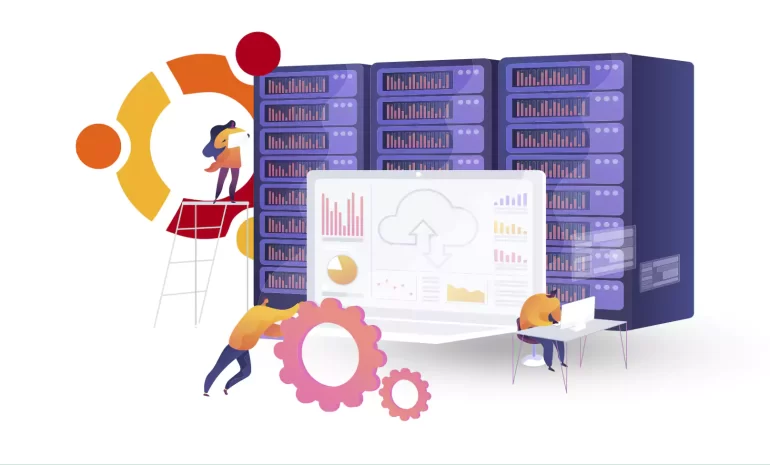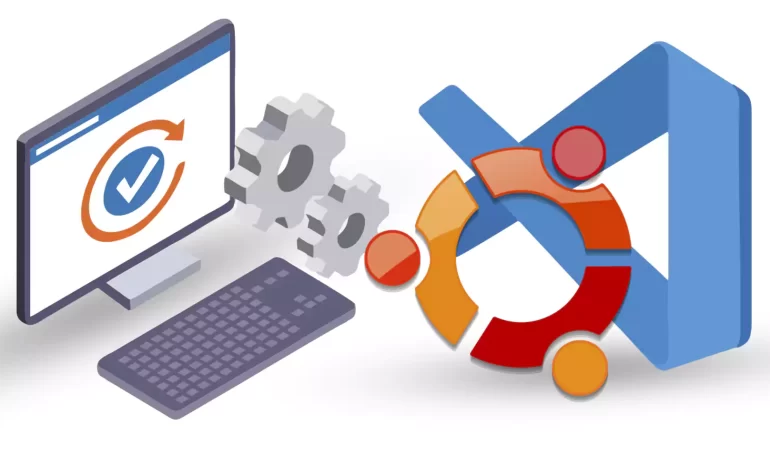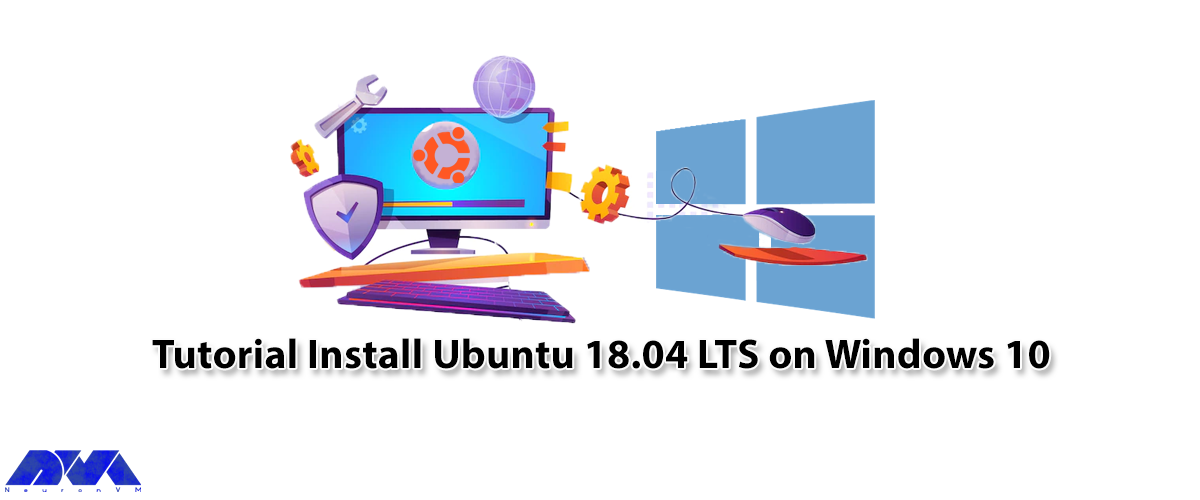






A system monitoring tool, also known as monitoring software or system monitor, is a type of software or application used to observe, manage, and collect data about the performance and behaviour of a computer system or network. These tools are essential for IT professionals and system administrators to ensure that systems are running efficiently, identify and address issues, and gather data for analysis and reporting. Here we will introduce the best Ubuntu server monitoring tools, keep reading.
Whether you are a regular user or a system administrator, maintaining the smoothness of the computer and network infrastructure is very important. So to monitor your system, especially Linux OS or Linux VPS, you need to use a monitoring tool to monitor all system activities such as CPU performance, and memory code, Monitor the network, and track the status of other connected devices.
Let’s find out the Ubuntu server monitoring tools
Htop is an interactive system monitoring tool for Linux operating systems. It is similar to the traditional top command but provides a more user-friendly and dynamic interface for monitoring system resources and processes.
Htop allows you to view and manage system metrics in real-time, making it easier to identify and diagnose performance issues on your system. This is suitable for consoles and terminals, that’s why it supports text mode.
Htop has many features that are used in FreeBSD, macOS, and OpenBSD Linux. This tool provides information such as working time, tasks, and load average. You can also change the color settings in the user interface to suit your needs. Htop supports real-time signals and custom scripts.

Stacer is an open-source tool used for system monitoring and optimization. System administrators can easily manage system resources and tasks with this tool. Its wonderful user interface and modern structure make you feel comfortable using it.
Stacer has many tools that help manage start-up programs and clean essential package caches, program logs, crash logs, cache, and garbage in the system cleaner tab. You can start or stop high-speed services, also, remove programs that you no longer need.
You can see the network activity for the last 60 seconds in the CPU, RAM, disk, and average CPU resource tab. It helps you have an apt repository that can be used to remove, enable, and disable any repository. Those using Ubuntu can take advantage of this to edit closed repositories.

Another monitoring tool for Ubuntu is Glances, which is written in Python and is cross-platform. This tool adjusts automatically depending on the size of the terminal and displays all the information in a single window. It shows all the necessary information as much as possible.
You can use glances in client/server mode and monitor the system through the web or terminal. As a result, having all the necessary information at once is one of the positive points of this tool. Other features of Glances include the use of a web interface for remote monitoring.
Tip: Using this tool for Linux running low-end programs may be a bit difficult because more CPU resources are required.

It can be said that another interesting and reliable tool for monitoring the Ubuntu system is Bashtop. This tool displays usage statistics of processors, disks, memory, network, and other resources. This tool is perfect for desktop and computer users. But it doesn’t work much for system administrators because it won’t satisfy their demands.
Also if we want to compare it with Htop it is a bit slower. Bashtop is easy to use and has a beautiful and perfect user interface.

Vtop is provided as a free and open-source tool that is responsible for monitoring the system of Ubuntu and other Linux distributions. This tool allows you to monitor and manage the system at the same time. It is especially useful for system administrators, developers, and anyone interested in monitoring system performance in a more user-friendly and interactive way.
More specifically, Vtop is a command-line tool and interactive system monitoring tool that allows users to view real-time statistics and information about the performance of their computer or server. It’s similar to the popular top tool that provides a dynamic view of system processes and resource usage, but Vtop adds some extra features and a more user-friendly interface.

If we want to introduce an advanced interactive system and process monitor for you, Atop is certainly one of the best that displays the load on Linux and Bubuntu systems. You can view the most important hardware resources such as CPU, disk, network, or memory. Or for a more detailed and longer review, record the use of resources permanently.
In other words, It provides detailed insights into system resource usage and process-level information, making it a valuable tool for system administrators and those interested in monitoring and troubleshooting system performance.

Gotop is a system monitoring and resource usage visualization tool for the command line and is graphical. It is designed to provide real-time information about system resource consumption, such as CPU usage, memory usage, and processes, in an easy-to-read and interactive format.
Gotop is typically used by system administrators and users who prefer command-line interfaces for monitoring their system’s performance. Unlike Atop and Vtop, Gotop doesn’t use node.js and is written in the Go language.

Monitoring your Ubuntu system is crucial to ensure its performance, stability, and security. Ubuntu provides various tools and practices for effective system monitoring. Here are some best practices for using Ubuntu monitoring tools:
1- For more comprehensive monitoring, you can also consider tools like Prometheus, Grafana, Zabbix, and Nagios. Choose the tools that best suit your monitoring needs.
2- Ensure that your Ubuntu system is up-to-date. Regularly run sudo apt update and sudo apt upgrade to keep your system and monitoring tools current.
3- Tools like Iftop and Nload can help you monitor network traffic and bandwidth usage. Consider netstat and ss for examining network connections.
4- Use tools like df and du to monitor disk space. You can also set up alerts for low disk space using monitoring solutions like Nagios.
5- If you’re running specific services or applications, setup monitoring for those using tools like Prometheus with exporters or application-specific monitoring agents.
6- Employ tools like fail2ban to monitor and protect against unauthorized access attempts. Tools like Logwatch can also help you keep an eye on security-related events.
7- Write custom scripts to monitor specific parameters or services and set up alerts through email, SMS, or other notification methods when thresholds are breached.
8- Consider centralizing your logs using tools like the ELK stack or similar solutions. Centralized logs make it easier to search, analyze, and correlate information.
9- Document your monitoring setup, including the tools you use, configurations, alert thresholds, and procedures to follow when alerts are triggered.
10- Regularly review your monitoring configuration and make adjustments as necessary.
Effective system monitoring is an ongoing process. Regularly assess your system’s performance, adjust your monitoring tools and practices as needed, and ensure that you are always ready to respond to potential issues.
The tools described in this section are the best Ubuntu server monitoring tools that can be used for Linux systems, especially Ubuntu. There are other tools available in this regard, but the mentioned items have been tested and as a result, the necessary reviews have been provided for you. We hope that the above information was useful for you and helped you make the right choice. Thanks for your cooperation.
How useful was this post?
Click on a star to rate it!
Average rating 5 / 5. Vote count: 1
No votes so far! Be the first to rate this post.

This article is presented to review visual studio code or VSCode. This tool is a powerful open-sourc...



 Tags
Tags

Ubuntu is a popular open-source operating system that is known for its stability, security, and user...



 Tags
Tags
What is your opinion about this Blog?








